

Paul Maric
This Tesla self-drove me 50km to Bunnings on its own (almost)
6 Days Ago
Volkswagen may be a late arrival to the small SUV segment but the T-Cross is exactly the kind of small SUV you'd expect from the German brand.
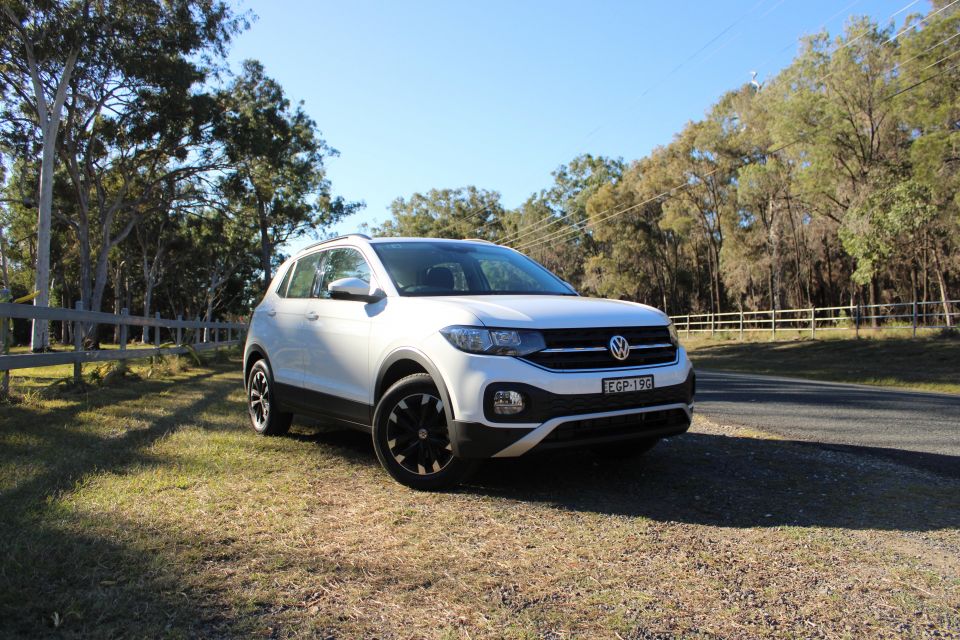
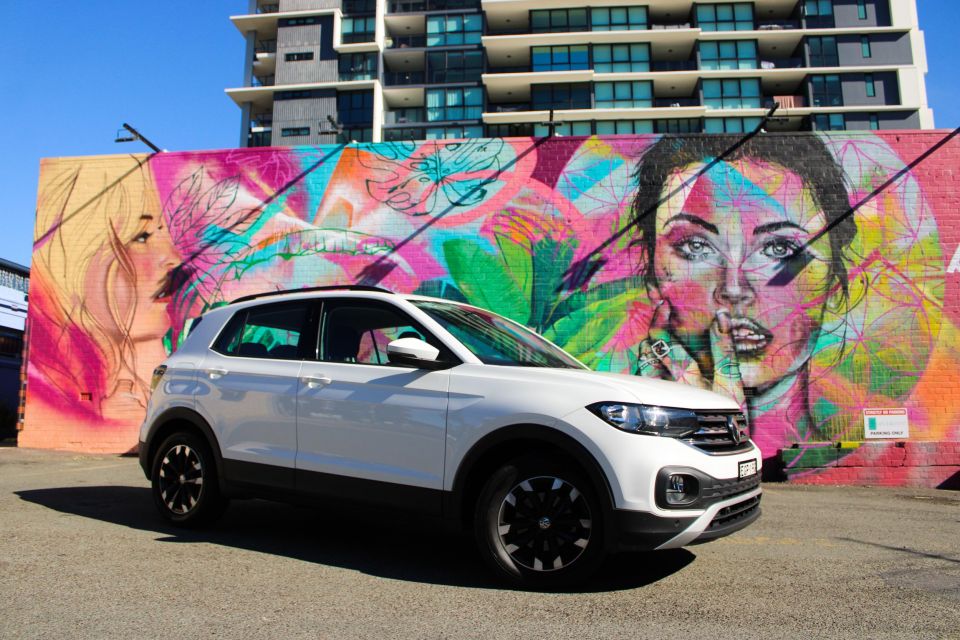

News Editor
New from
$27,990
excl. on-roads

News Editor
New from
$27,990
excl. on-roads


News Editor
New from
$27,990
excl. on-roads

News Editor
New from
$27,990
excl. on-roads
Quickly see how this car stacks up against its competition. Select any benchmark to see more details.
Where expert car reviews meet expert car buying – CarExpert gives you trusted advice, personalised service and real savings on your next new car.
While SUVs have rapidly proliferated throughout rival ranges, Volkswagen has made do with just the Tiguan and Touareg. That changed this year, when Volkswagen Australia doubled its SUV range.
The new arrivals are both small SUVs slotting in below the Tiguan, and wear similar nameplates: T-Cross and T-Roc. The T-Cross is the smaller of the two, and is based on the Polo hatchback.
Both models enter a small SUV market with irregular borders and an enormous amount of variety – within $2000 either way of the T-Cross’s base price, you’ve got cars of varying sizes, plus entry-level mid-sized SUVs and even the Suzuki Jimny.

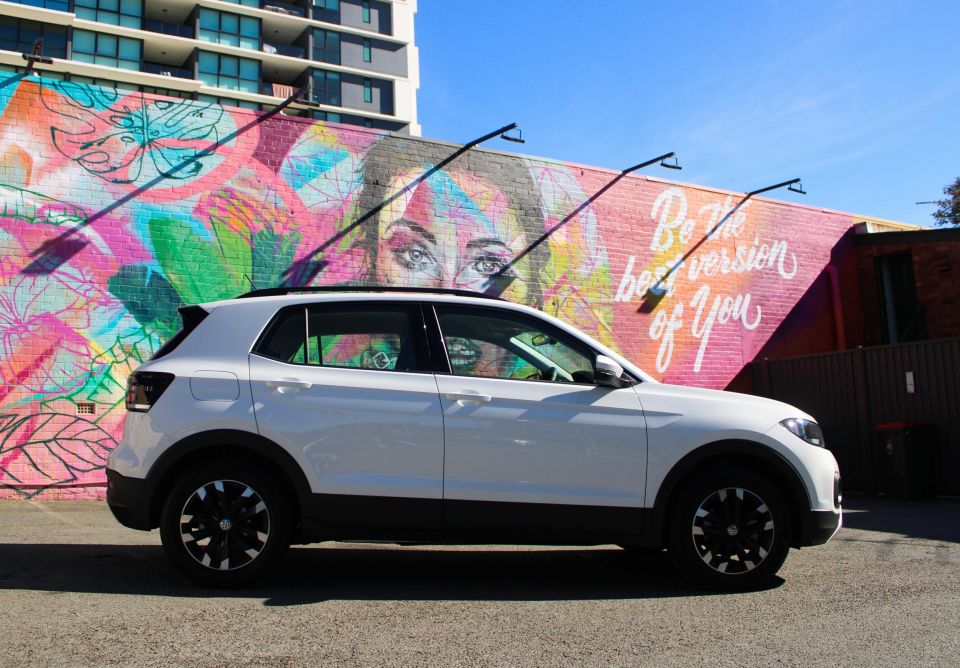
The T-Cross has mature styling inside and out, in stark contrast to quirkier SUVs like the Toyota C-HR and Nissan Juke. While its looks are a little more tea cosy than T-Pain, it should still appeal to younger and older buyers alike.
The T-Cross range opens at $27,990 before on-road costs for the 85TSI Life featured here. There’s only one other model – the 85TSI Style – which is priced at $30,990 before on-roads.
Our tester’s Pure White paint contrasts nicely with the 16-inch ‘Rochester’ alloy wheels – which arguably look nicer than the Style’s 17-inch alloys – but why not go for an actual colour? You’ll pay $600 for the privilege, or $800 for the T-Cross’ hero Makena Turquoise colour. It feels like the 1990s all over again as teal and turquoise return to car colour palettes.
The T-Cross fits between the Hyundai Venue and Kona in exterior dimensions. Its price, however, is around $2000 more than the highest-spec Venue and somewhere in the middle of front-wheel drive Kona pricing. Other SUVs at its price point include the base Nissan Juke ST and Kia Seltos S.
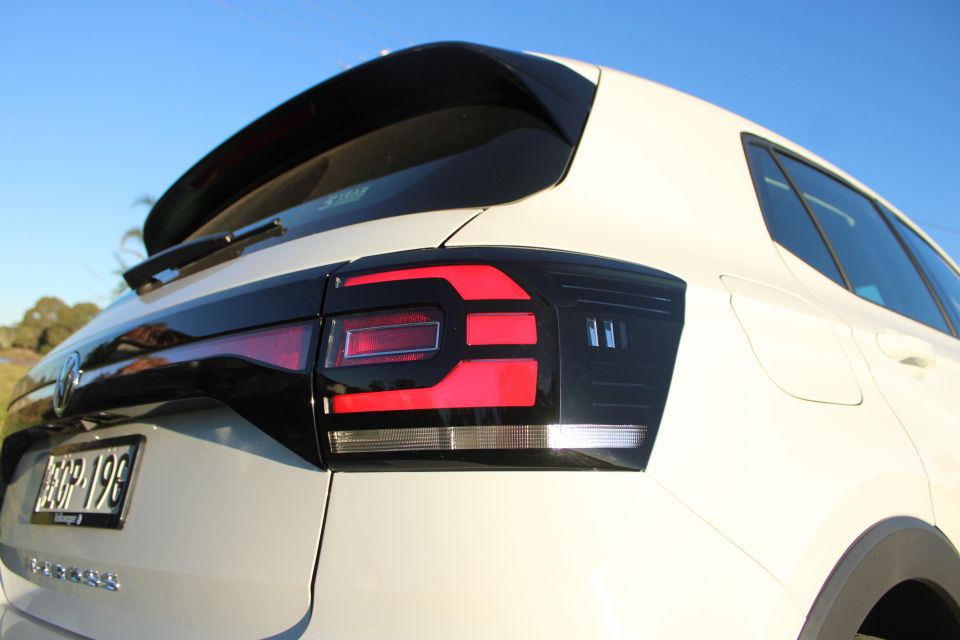
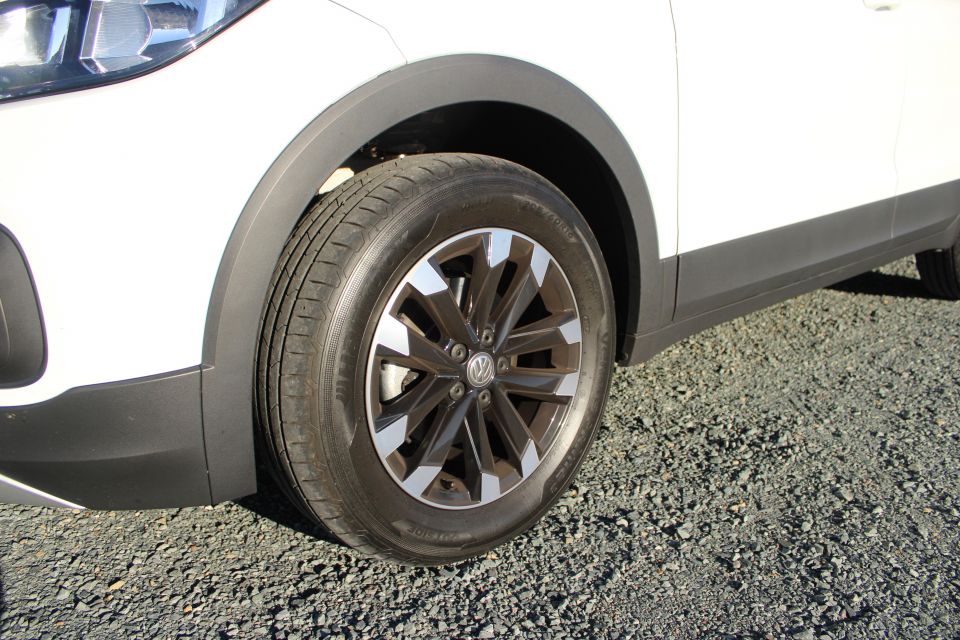
While the equipment list isn’t lavish, there are some thoughtful inclusions belying the T-Cross Life’s base status. In addition to rear parking sensors and a reversing camera, for example, there are standard front parking sensors and front fog lights with a static cornering function. All four windows also have one-touch up and down, while the steering wheel and handbrake are leather-wrapped.
The T-Cross Life uses an 8.0-inch touchscreen infotainment system with Android Auto and Apple CarPlay, though there’s no satellite navigation. Other standard equipment includes wireless phone charging, lane-keeping assist, automatic headlights, and rain-sensing wipers.
If you want LED headlights or dual-zone climate control, you’ll need to step up to the Style. There are a couple of option packages available for the Life, however.
The $1900 Sound and Vision package adds a 300W Beats premium sound system, 10.25-inch Digital Cockpit and satellite navigation, while the $1200 driver assistance package adds adaptive cruise control, blind-spot monitoring, power-folding exterior mirrors and semi-autonomous parking assist.
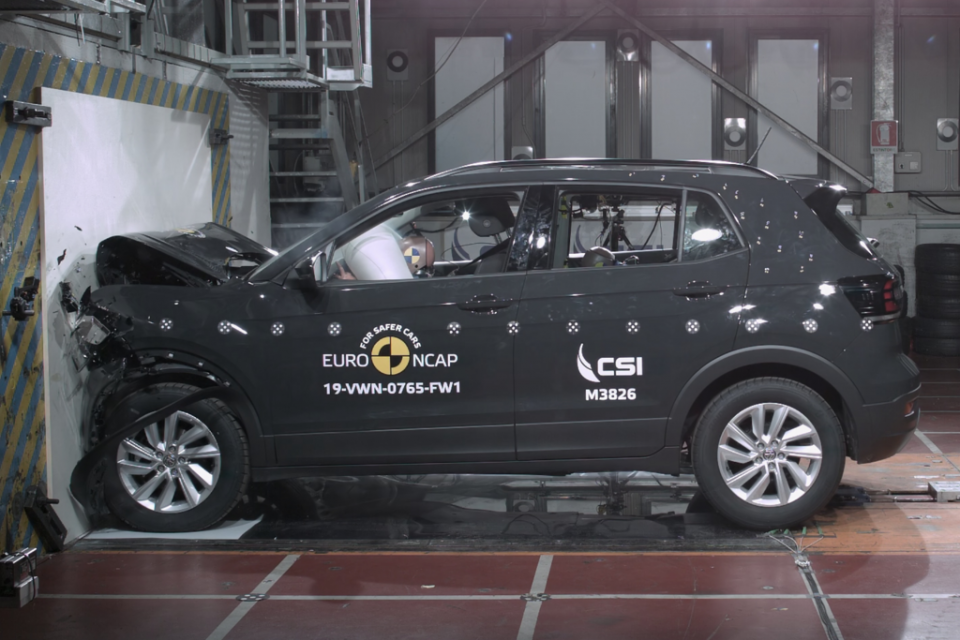
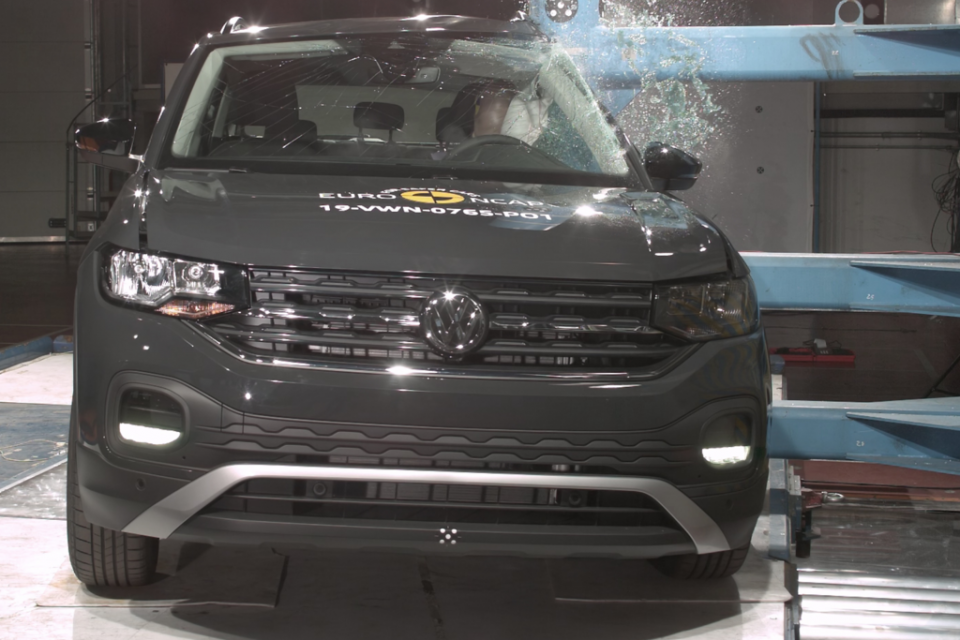
ANCAP has recorded a rating of five stars for the T-Cross. That’s based on Euro NCAP testing conducted in 2019, where the T-Cross received an adult protection score of 97 per cent, a child occupant protection score of 85 per cent, a pedestrian protection score of 81 per cent, and a safety assist score of 80 per cent.
The T-Cross Life comes standard with lane-keeping assist, lane-departure warning, anti-lock brakes, as well as front, front-side and curtain airbags plus a driver’s knee airbag.
There’s also autonomous emergency braking with pedestrian and cyclist detection. The automatic braking works at speeds between five and 250km/h for moving vehicles including bicycles, five and 85km/h for moving pedestrians, and five and 65km/h for pedestrians and cyclists crossing the street.
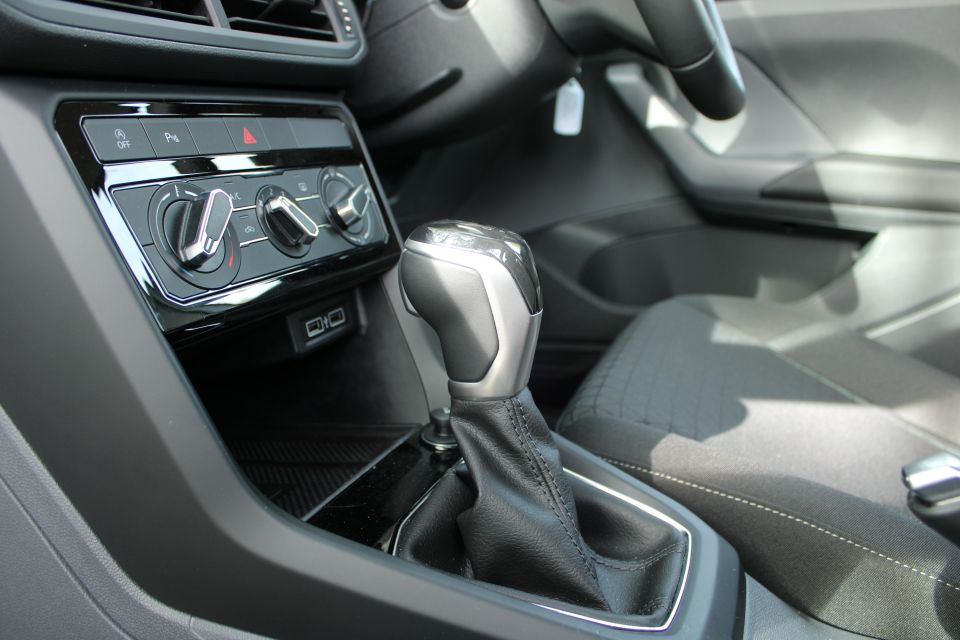
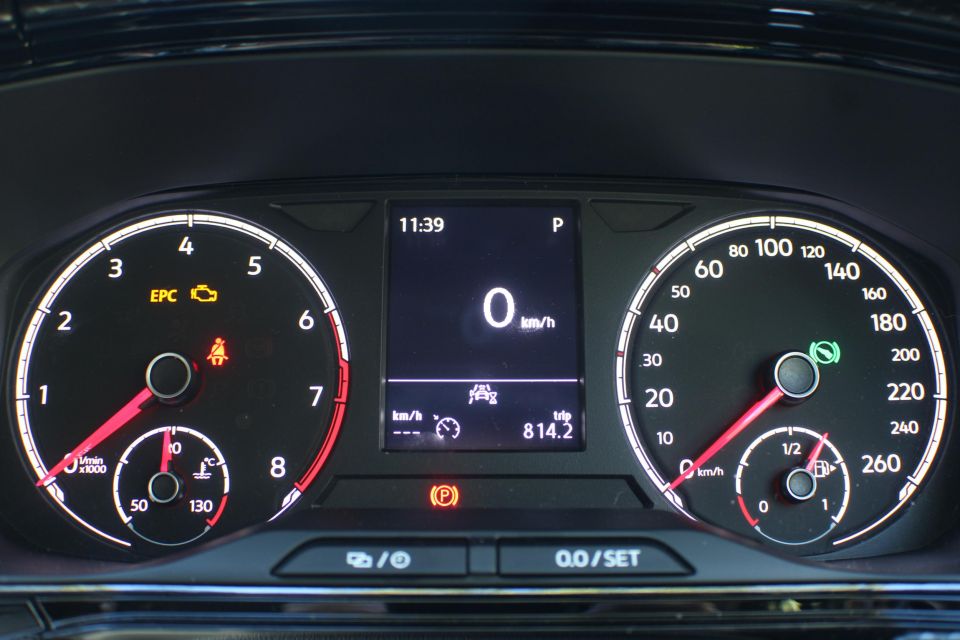
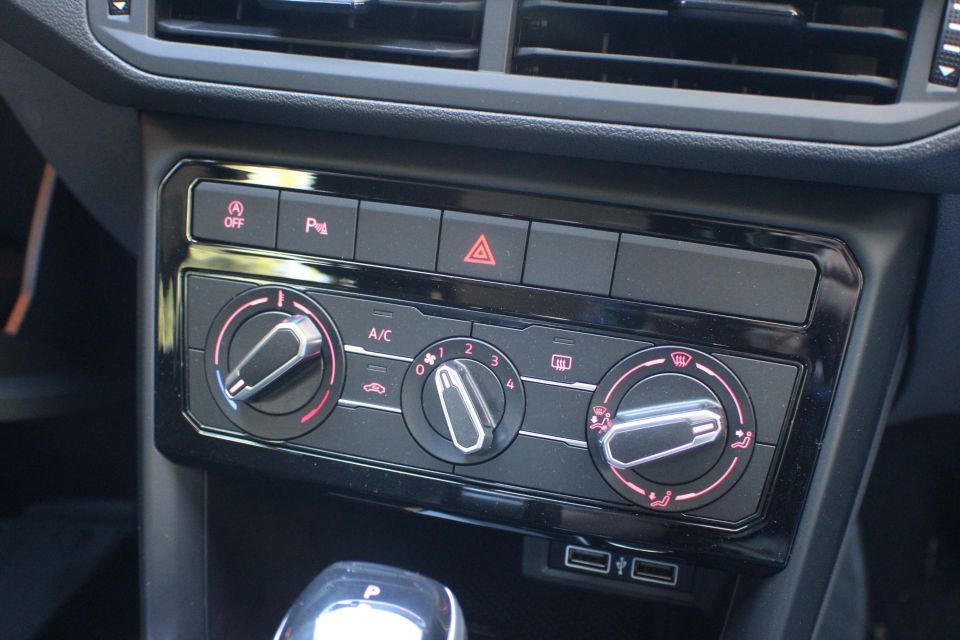
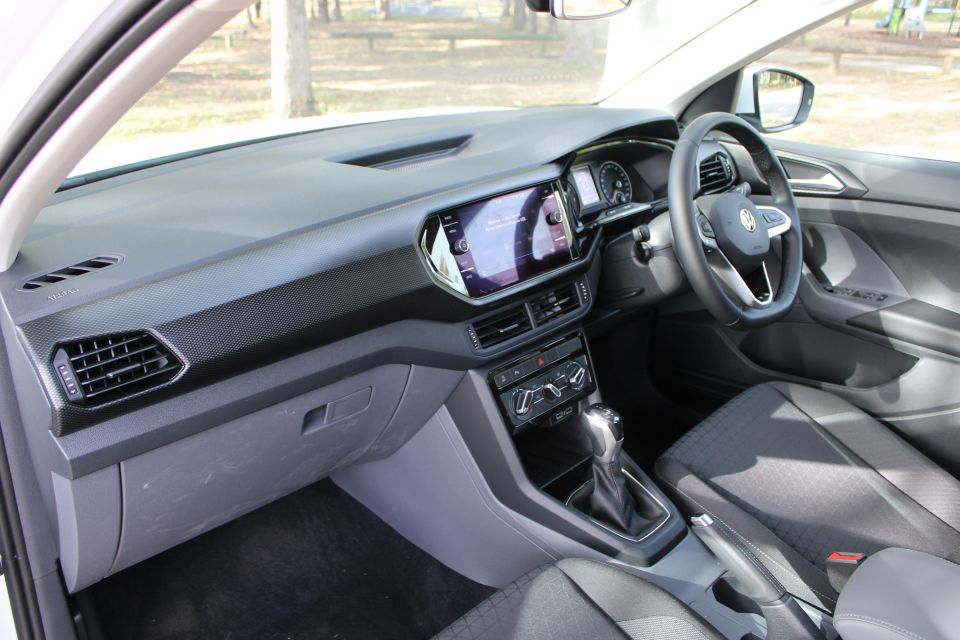
The interior has all the design zest of a Volkswagen cabin blended with some materials reminiscent of those in a Kia Rio.
While small SUVs like the Hyundai Venue and Nissan Juke feature more youthful trim than their stablemates, the T-Cross goes for a traditional, conservative Volkswagen dash design. That’s not necessarily a demerit, but the plastics used throughout the cabin are hard, scratchy and none too premium in look or feel.
In a circa-$20,000 Polo, that’s tolerable but at $27,990 before on-road costs it’s a bit disappointing.
The grey trim across the dash doesn’t do much to break up the monotony, although we’re grateful it’s not piano black. The overall design is straightforward and handsome, it could just do with a splash of colour here and some soft-touch plastics there.
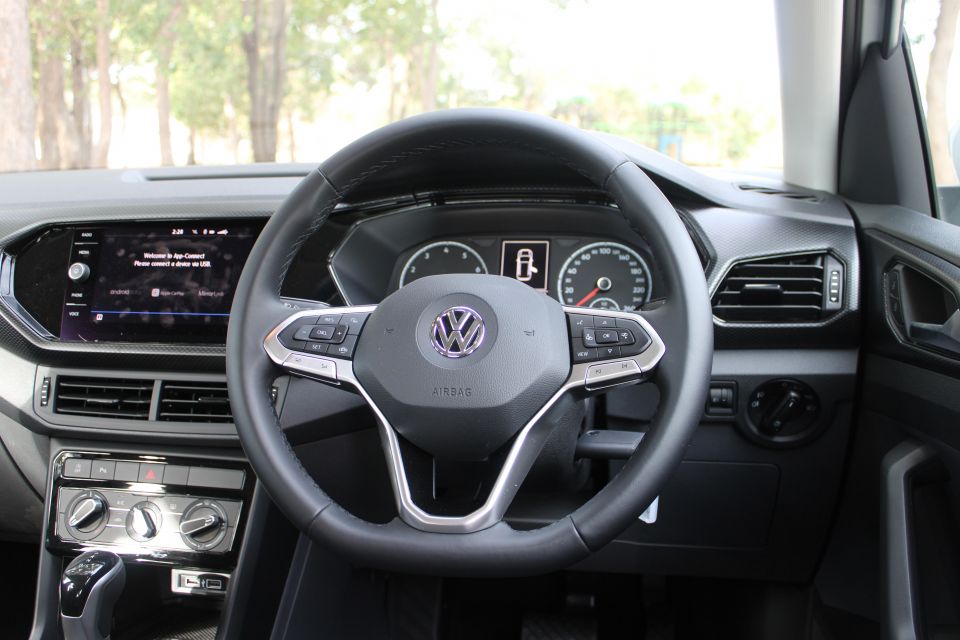
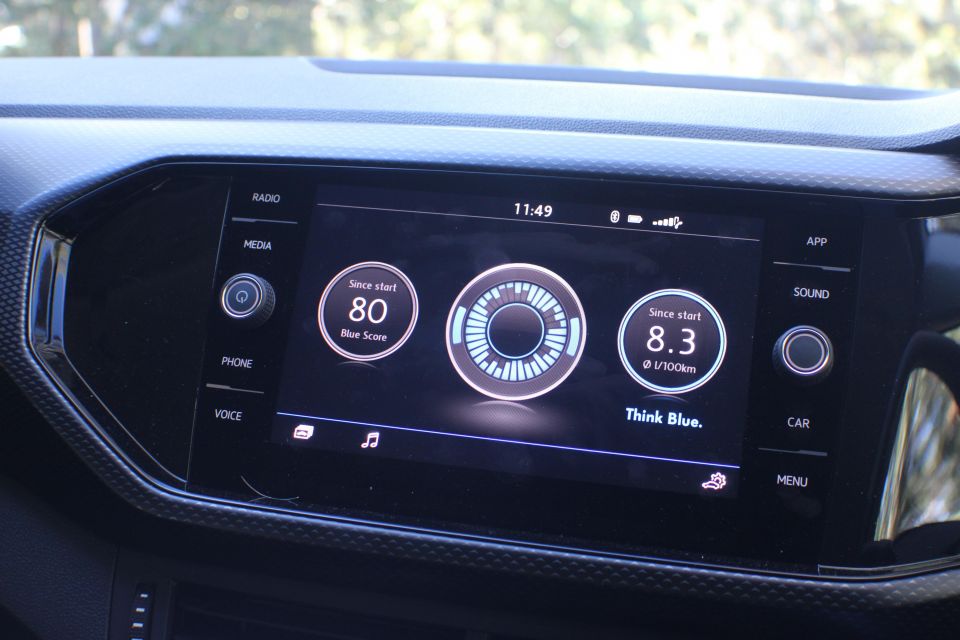
While you won’t find much squishy plastic in the cabin, everything is assembled well. There are also two touch points that are wonderfully tactile: the chubby, leather-wrapped steering wheel and the similarly-wrapped handbrake.
The front seats are comfortable and supportive over long distances and the diamond-patterned cloth is attractive. There’s also excellent visibility in the cabin out the sides, and a decent amount out the back.
The infotainment system is slick, with quick response times and a premium look. There’s no standard satellite navigation but it does have Android Auto and Apple CarPlay.
There are a few peculiar omissions in the cabin. There are no grab handles in the cabin, which feels like cost-cutting. Ditto the absence of lights for the vanity mirrors.
Storage in the cabin is a mixed bag. We love the huge door pockets that can fit even a 1.25L bottle of water (the rear doors have only slightly smaller pockets). The standard wireless charging pad at the base of the centre stack is, of course, a good spot to put your phone. The centre console bin, however, is tiny – you can fit a wallet, but many smartphones won’t fit.
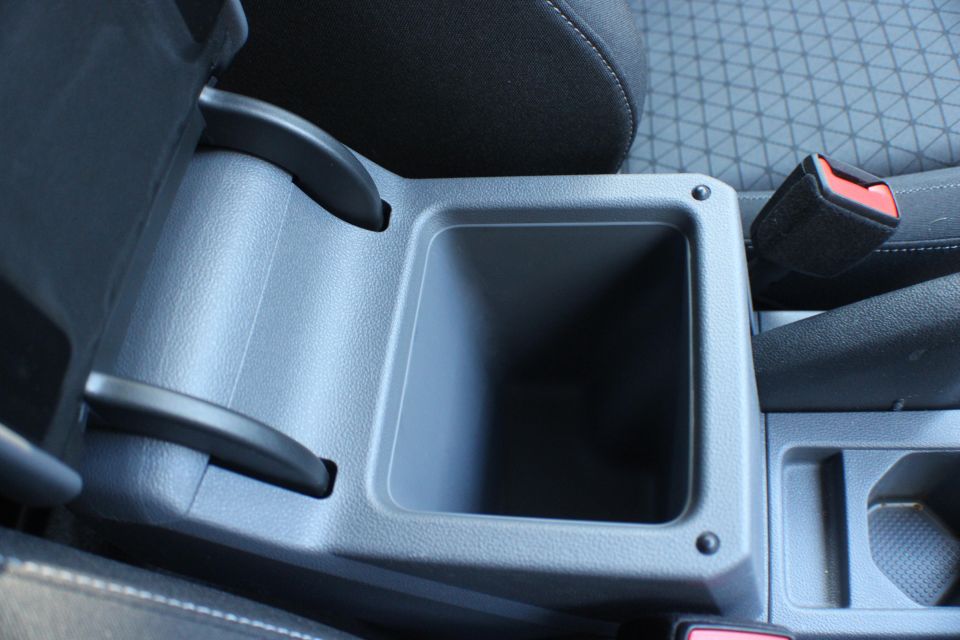
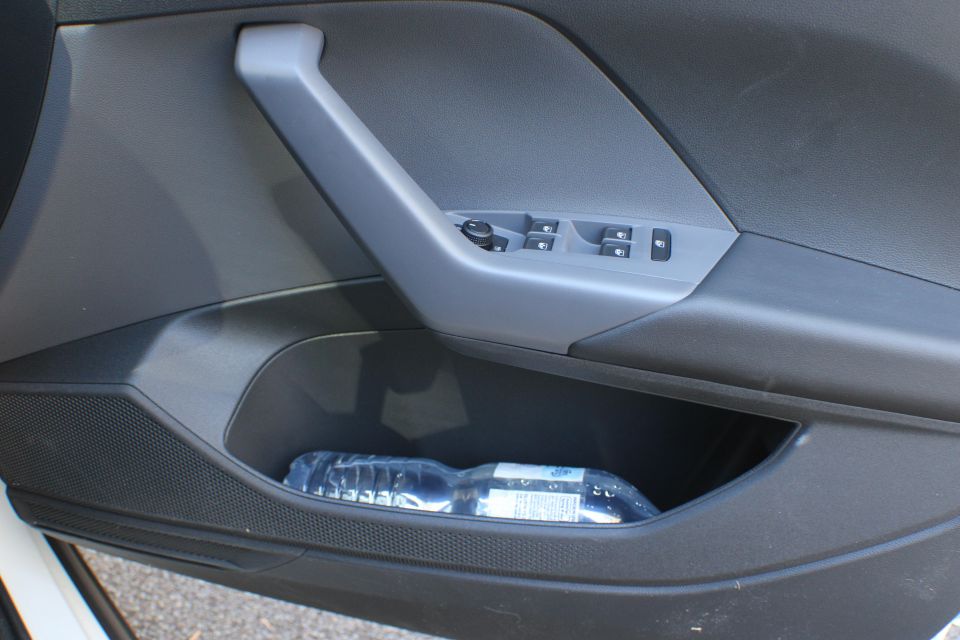
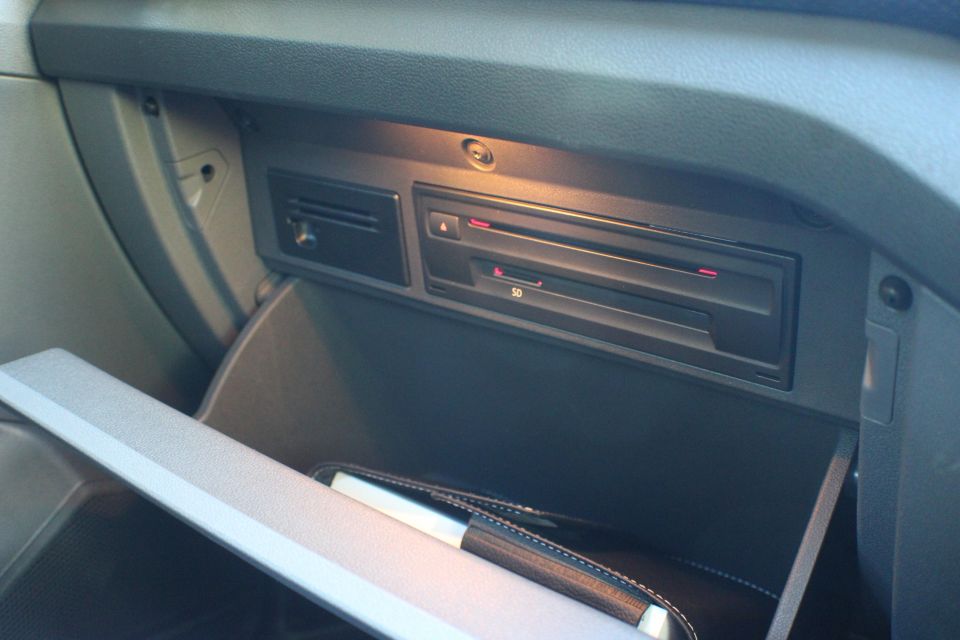
There’s a little shelf of sorts on the dash top with a rubberised lining, but it leaves whatever you’re putting there completely exposed.
The CD player and SD card outlet are located in the glove compartment, while two USB outlets sit just above the wireless charging pad.
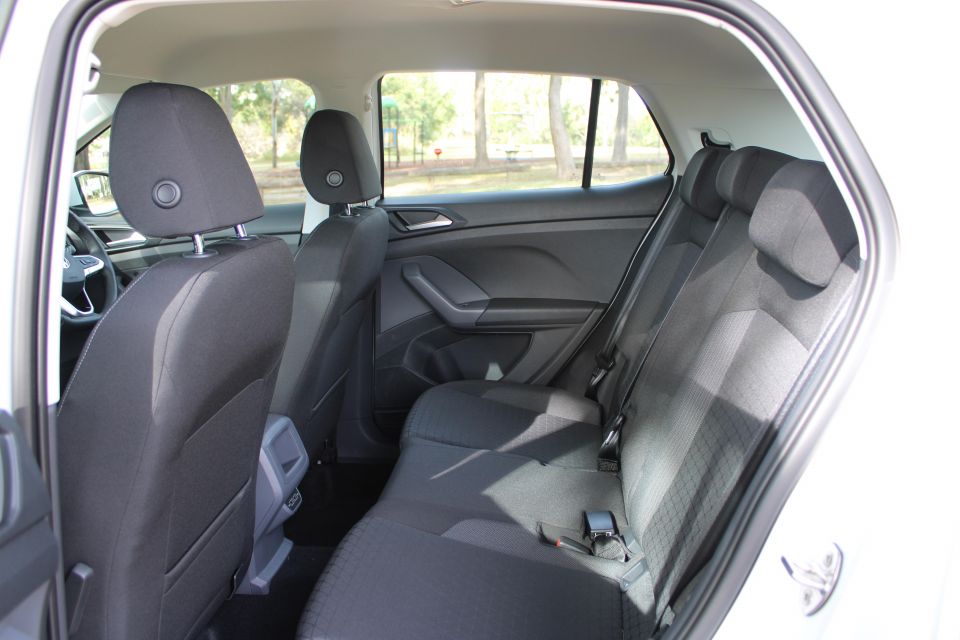
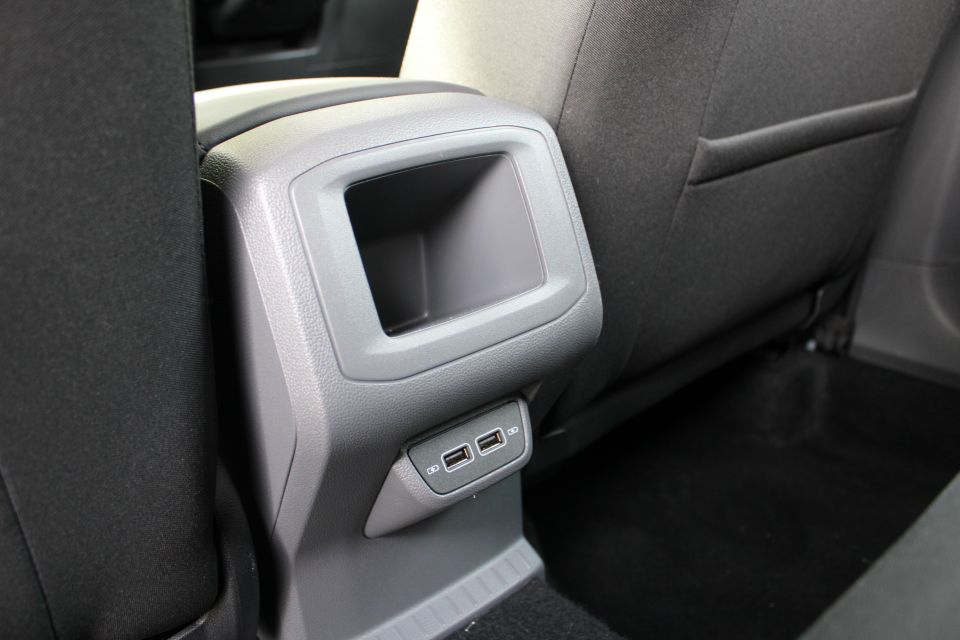
Rear-seat passengers have two USB charging points but no rear air vents. Instead, there’s a shallow recess where vents would typically sit.
There’s plenty of room in the back seat, with more than enough headroom for adults and excellent leg room. A six-footer can sit behind another six-footer with ease, and the front seat backs are upholstered and feature pockets. Carrying three adults abreast for anything beyond short trips isn’t advisable, however, due to the T-Cross’s 1760mm width.
If your passengers are of the crawling and babbling variety, you’ll find three top-tether and two ISOFIX child seat anchor points.
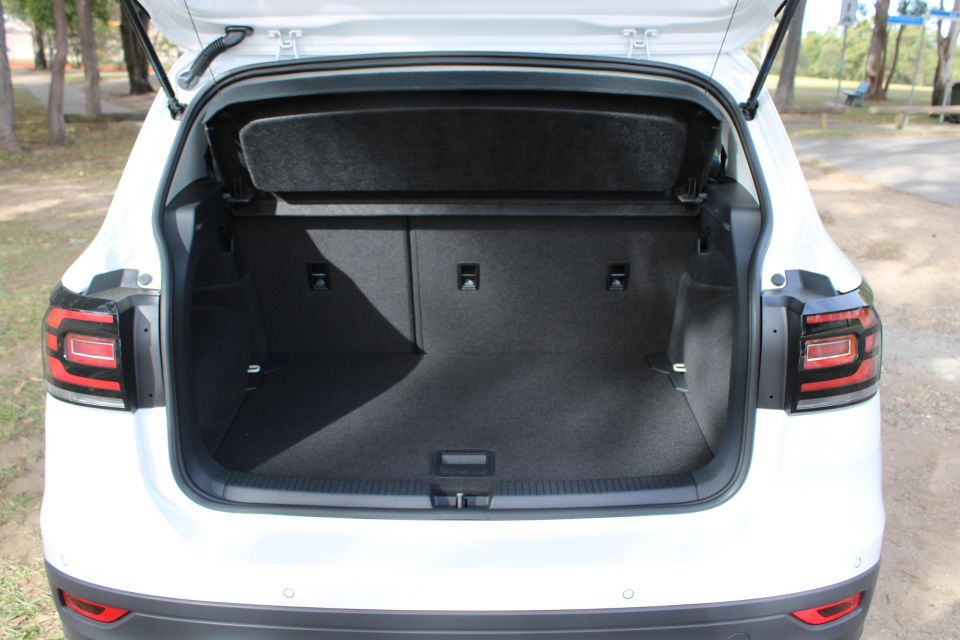
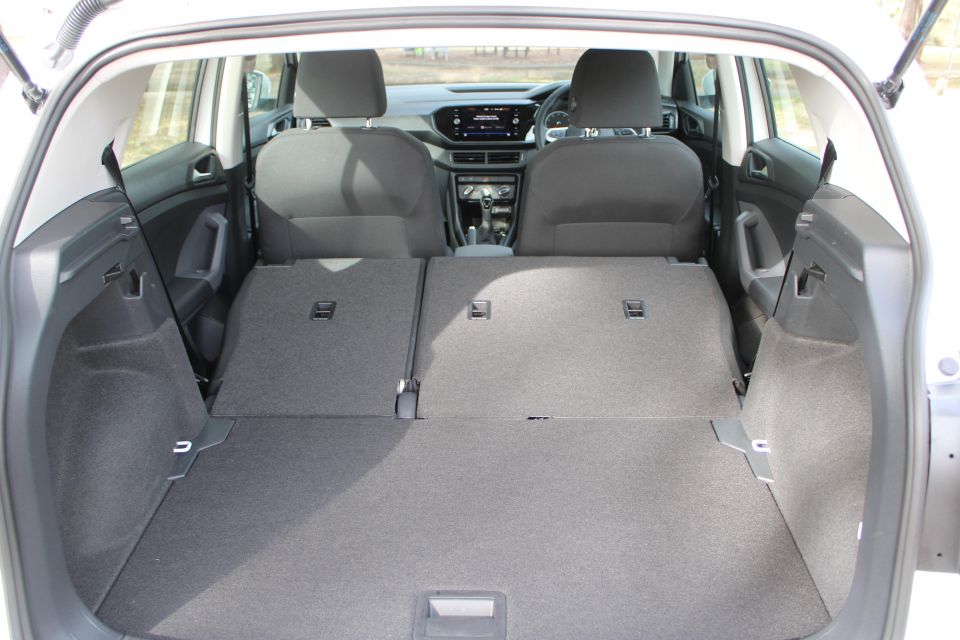
If you’re more likely to move stuff than people, the rear seat slides by up to 14cm to increase your luggage space. Cargo volume measures 385L, expanding to 455L with the second row slid all the way forward and 1281L with it completely folded. Those figures are impressive for a car with the T-Cross’s footprint.
Underneath the boot floor you’ll find a space-saver spare.
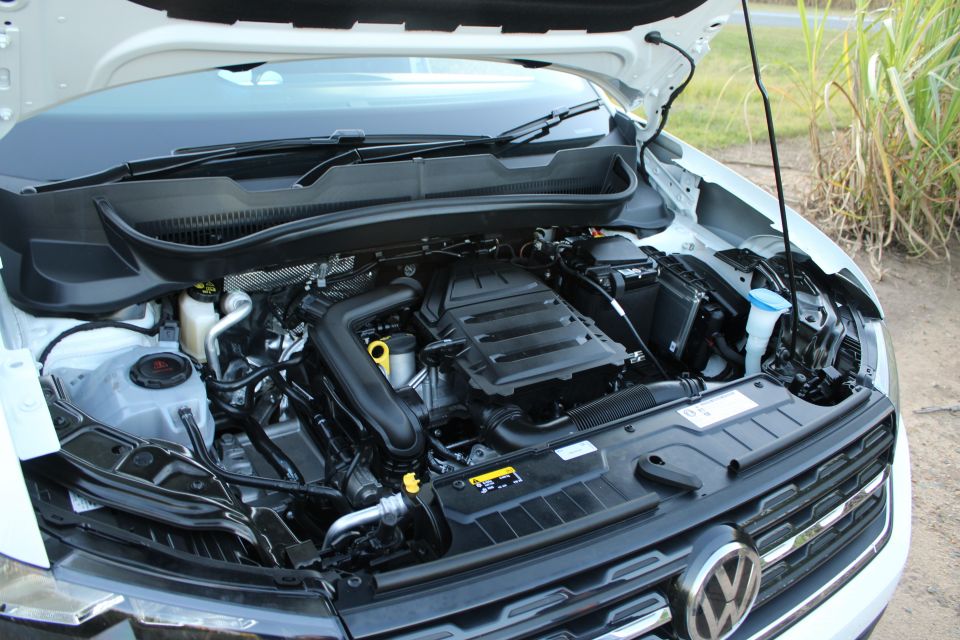
While there are larger, four-cylinder petrol and diesel options in other markets, the local T-Cross range exclusively uses a turbocharged 1.0-litre three-cylinder petrol engine producing 85kW of power and 200Nm of torque.
It’s mated to a seven-speed dual-clutch automatic transmission and powers the front wheels only. Volkswagen quotes a 0-100km/h time of 10.2 seconds.
You might think, based on how it looks inside and out, that the T-Cross is your typical Volkswagen: smooth, polished, mature. You’d be mostly right, but the T-Cross has a fun twist.
If you’ve driven a Polo, you’ll know how quirky and playful the three-cylinder powertrain featured here is. The turbo triple is a cracker of an engine – it’s tractable and has a lovely offbeat thrum. It’s also easier on the ears than a lot of four-cylinder engines under load, never sounding strained.
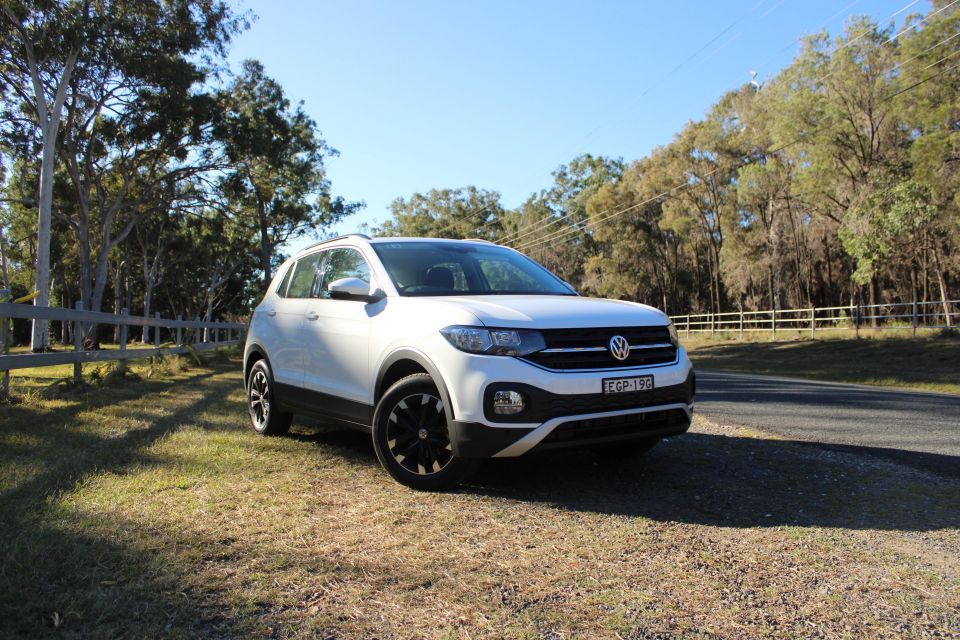
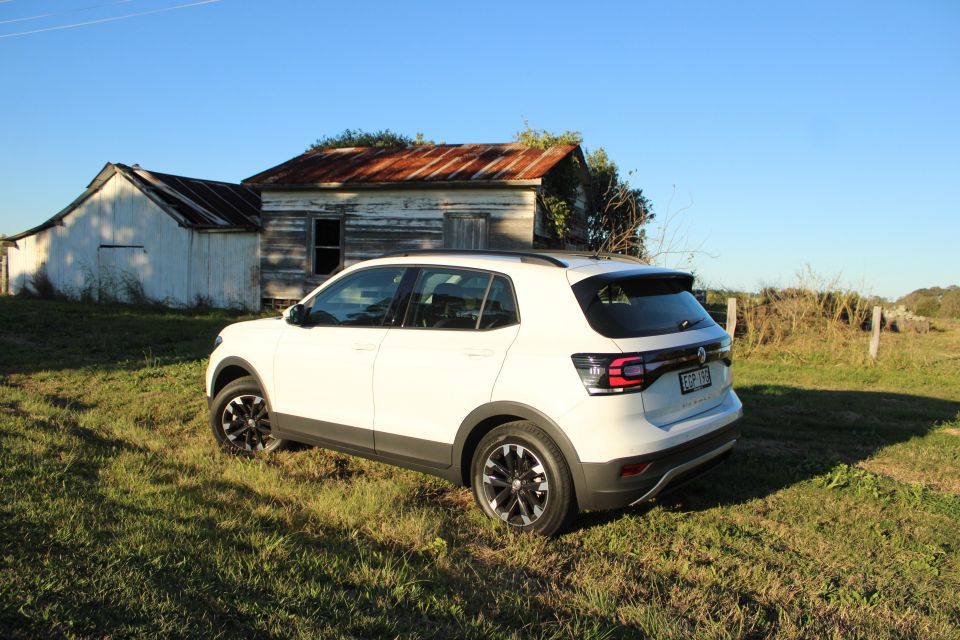
As it lacks balance shafts, there’s a bit of vibration that gets into the cabin under even the lightest of acceleration. In some urban driving, the T-Cross feels a bit like you’re driving a manual car in too high a gear for your speed. While the vibration is more than you’d experience in most four-cylinder cars, we wouldn’t call it unrefined.
There’s a slight delay off the line at times as the turbo spools up and the DSG finds the right gear. It’s easy to keep up with traffic, however, and the transmission has snappy shifts once you get past second gear.
The T-Cross comports itself well in highway merging and overtaking. At high speeds, road and wind noise is also kept to a minimum.
The ride is firm – but although you may feel bumps on the road, they’re well absorbed by the suspension. While the ride isn’t cushy, this isn’t a sports car. You do feel the higher centre of gravity around corners, and there’s noticeable (but not objectionable) body roll.
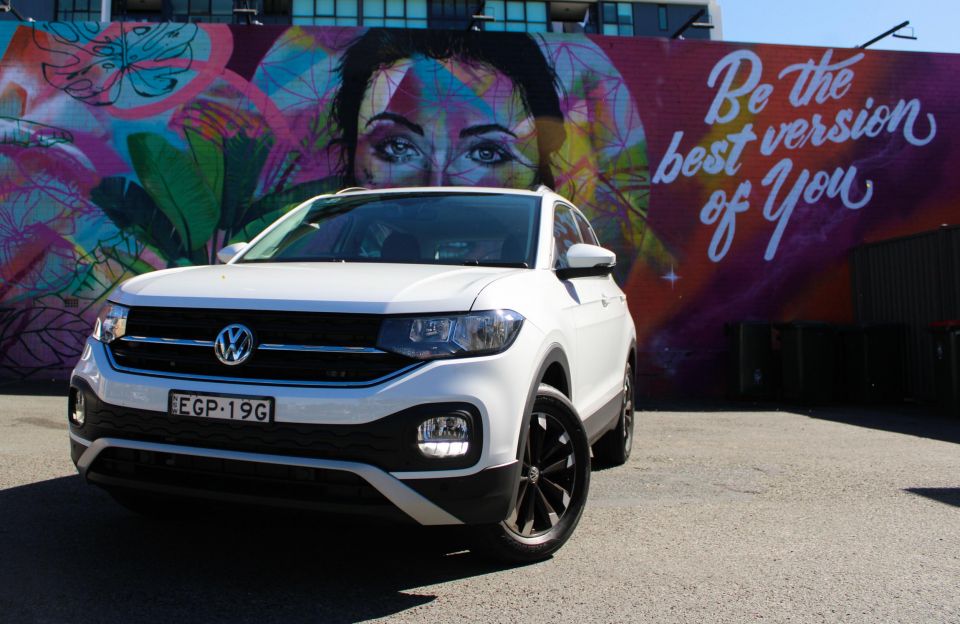
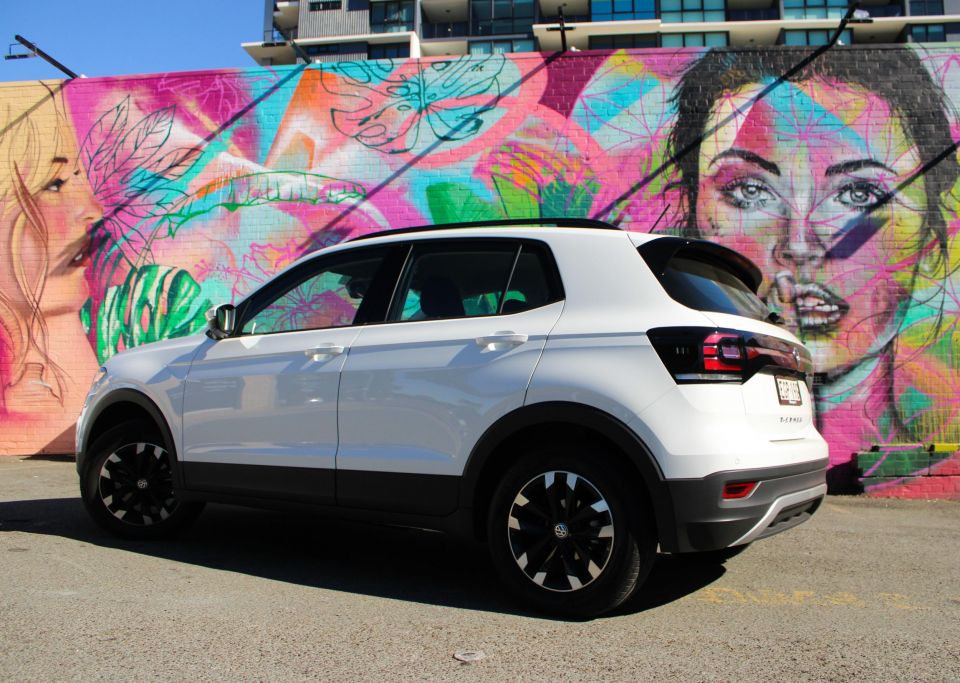
The steering is direct and well-weighted and, as we mentioned earlier, it’s a lovely wheel to have in your hands. You’ll feel the lane-keeping assist system tugging at the wheel sometimes – it’s more assertive than some rival systems.
The stop/start system proved rather annoying in the T-Cross. In some cars, you have to fully depress the brake pedal for the stop/start system to switch off the engine. In the T-Cross, it happens much more regularly, even at inopportune moments like when you’re edging through an intersection waiting for an opening. On a few occasions, I just turned the system off.

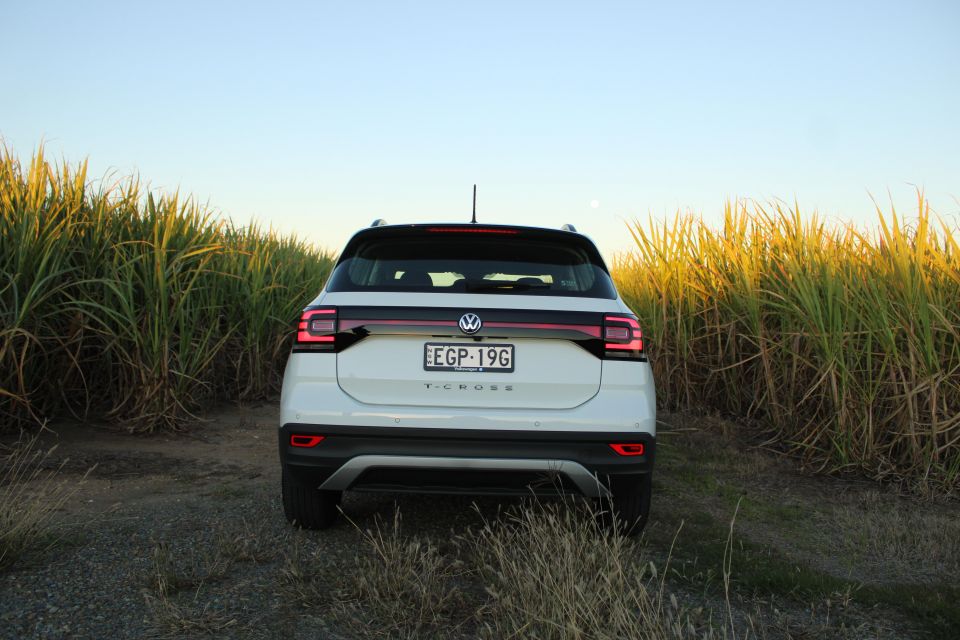
Volkswagen claims the T-Cross consumes 5.4L/100km on the ADR combined cycle. We averaged 6.7L/100km over a mix of city and highway driving, though before resetting the fuel economy readout it was displaying an average of 6.0L/100km.
Volkswagen offers a five-year, unlimited-kilometre warranty and a five-year/75,000km servicing care plan, priced at $1800. Service intervals are every 12 months or 15,000km, whichever comes first.
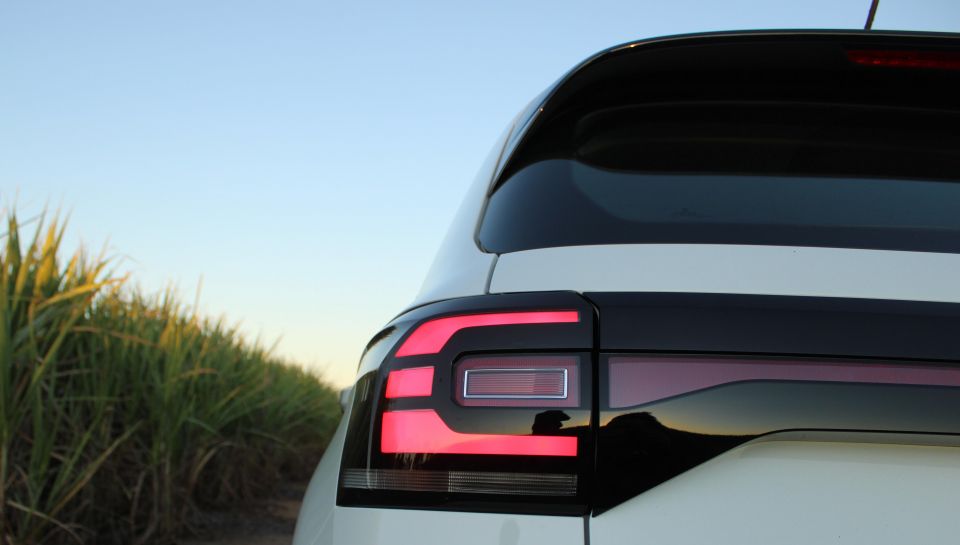
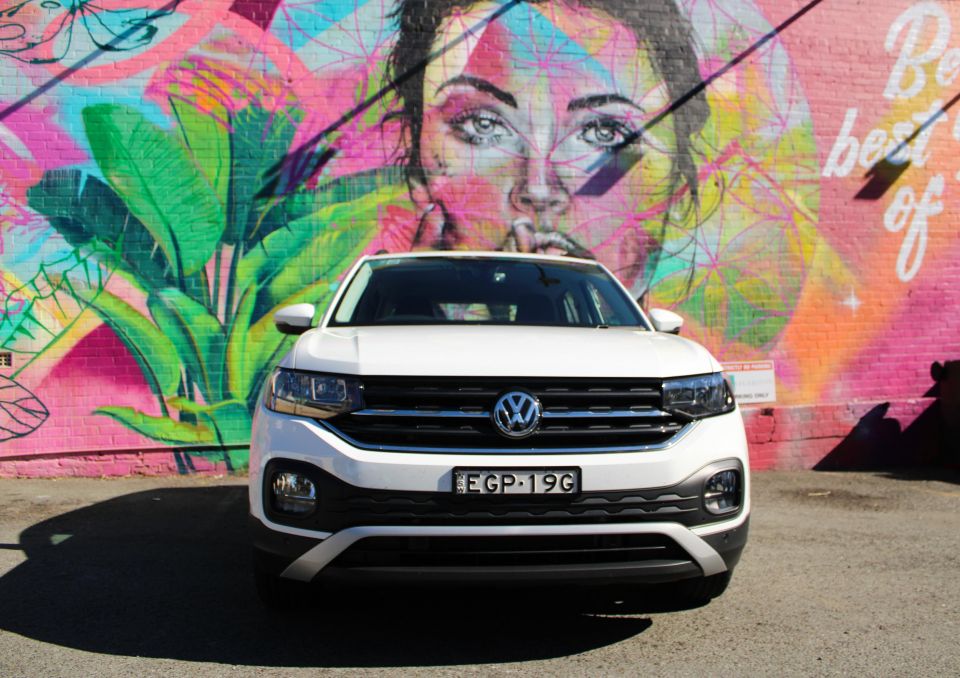
Where expert car reviews meet expert car buying – CarExpert gives you trusted advice, personalised service and real savings on your next new car.
Volkswagen may have been late to the small SUV segment in Australia, but it’s arrived with a car that stands up well against the competition and is identifiably a Volkswagen in the way it looks and drives.
Mind you, the Polo on which it’s based is available with the same powertrain and costs around $3000 less when similarly-specified. But we know that a small SUV buyer is more likely to cross-shop a small SUV against other high-riding models. In that respect, the T-Cross stacks up well.
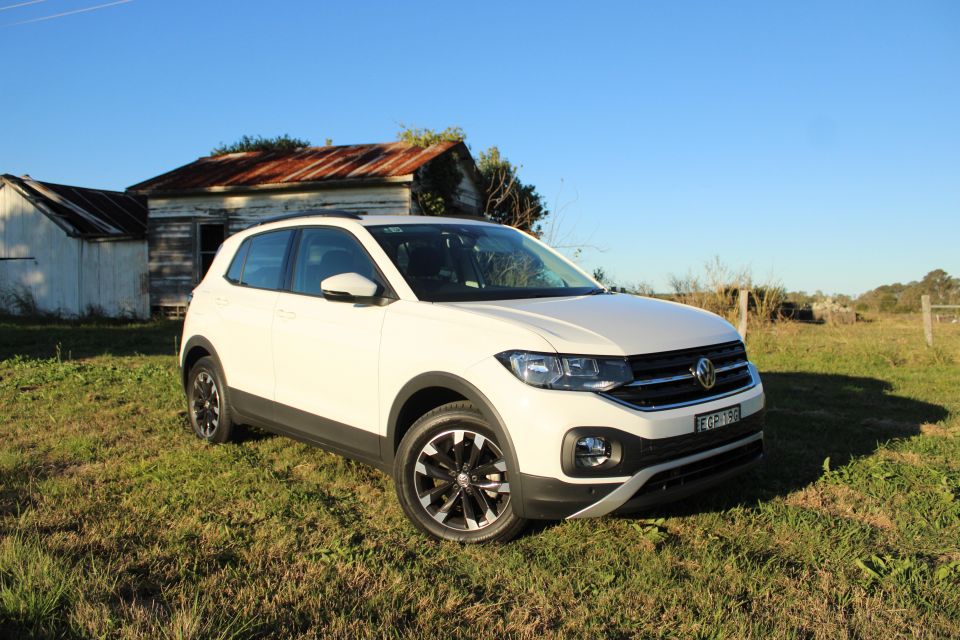

The T-Cross has a more polished feel than a Hyundai Venue, more features than a Hyundai Kona Go or Active, more conventional styling than a Nissan Juke, and a more comfortable back seat than a Mazda CX-3. We just wish the interior used some nicer materials.
The thrummy three-pot gives the Volkswagen T-Cross a bit of a quirky character but otherwise this is exactly what you’d expect from a small SUV with a Volkswagen badge. And that’s not a bad thing.
Where expert car reviews meet expert car buying – CarExpert gives you trusted advice, personalised service and real savings on your next new car.
William Stopford is an automotive journalist based in Brisbane, Australia. William is a Business/Journalism graduate from the Queensland University of Technology who loves to travel, briefly lived in the US, and has a particular interest in the American car industry.


Paul Maric
6 Days Ago
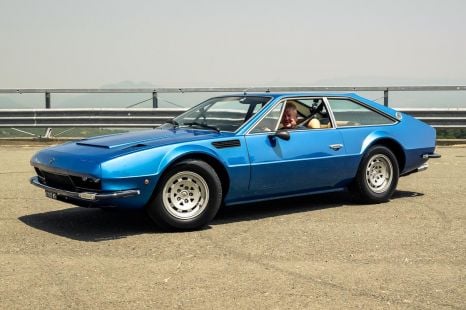

Anthony Crawford
5 Days Ago


Max Davies
4 Days Ago


James Wong
2 Days Ago


James Wong
2 Days Ago


Max Davies
19 Hours Ago